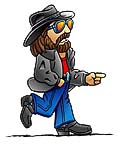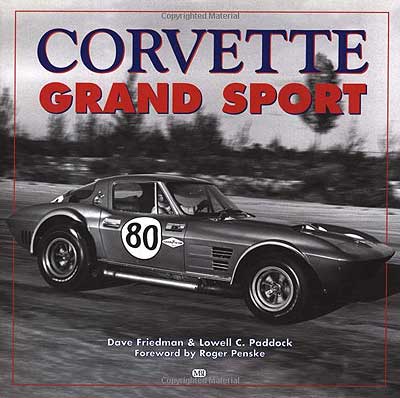Dateline: 7.27.11
This could have been the beginning of a grand adventure for Corvette racing!
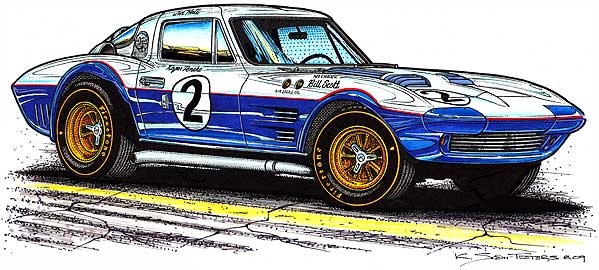
This is how we tend to think of the ’63 Grand Sport Corvette, with its aggressive fender flares, scoops, vents, and fat racing wheels and tires. Initial production was supposed to be 100, but Duntov envisioned at least 1,000 Grand Sports!
For those of us who are fans of the early days of the Corvette, the name, “Zora Arkus-Duntov” casts a very long shadow. GM’s chief of styling, Bill Mitchell once referred to Zora as, “Just a lowly engineer on a low-volume production Chevy.” While that may well have been correct, thanks to friends in very high places inside Chevrolet, Duntov got away with some astonishing things. And the Grand Sport wasn’t the first or last bodacious stunt he pulled.
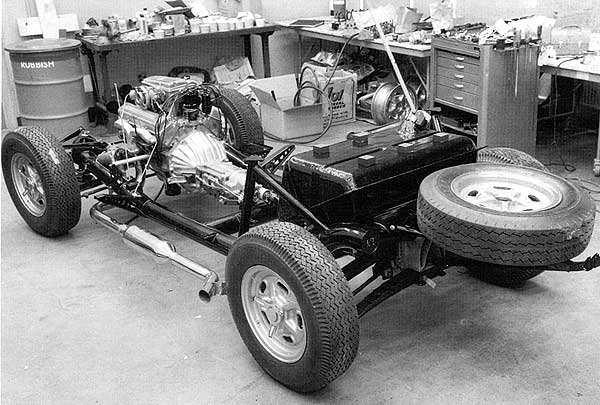
There wasn’t much under the thin fiberglass body. The car had magnesium Hallibrand knock-off wheels, an aluminum bell housing, transmission case, and rear differential, plus a 36-gallon fuel tank. Note how the side pipes came off the stock cast iron exhaust manifolds. FIA rules mandated that the cars carry a spare tire. (GM photo from the book “Corvette Grand Sport” by Lowell C. Paddock)
For this adventure, Duntov’s GM “angel” was Simon “Bunkie” Knudsen. While Bunkie personally never raced cars, he did work on the GM assembly line as a college student in the ‘40s and was passionate about race cars. While general manager at Pontiac from 1956 to 1961, Knudsen was responsible for establishing the “wide-track Pontiacs,” involving Pontiac in NASCAR, and hiring John Z. Delorean away from Packard. DeLorean would later champion the Tempest-based GTO, the original “muscle car.” Zora was very aware of the concept of “purpose-built” race cars, similar to the cars Max Balchowsky had been building. He may well have even been inspired to build the Grand Sport as a result of the success of Dave MacDonald and Jim Simpson’s 1961 Corvette Special, however, there’s no documentation to support that assertion, aside from timing.
Regardless, according to Lowell C. Paddock’s book, “Corvette Grand Sport” on page 16, Knudsen gave Duntov the green light to begin development of what was then known simply as “the Lightweight.” To compete against the new Shelby Cobra and at the same time, be mass produced, Zora knew that the Lightweight’s frame would have to be very simple. A Mercedes-like birdcage space frame would be out of the question, so a simple, but strong, ladder-type tube frame was designed.
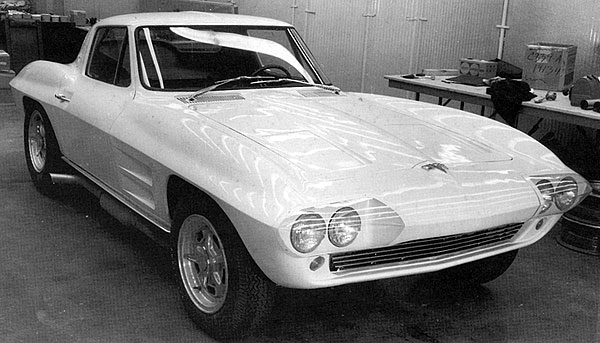
This is very early in the development process. With the exception of the front turn signals and fixed headlight, the body is amazingly stock. However, in the back, the famous split-window was lost and the rear deck had a trunk to comply with FIA rules requiring competition cars to carry a spare tire. Also, the rear window was plexiglass. (GM photo from the book “Corvette Grand Sport” by Lowell C. Paddock)
By July 1962, with the overall design completed, including an all-aluminum fuel-injected 327 version of the street Corvette Fuelie engine, production began on just enough cars to qualify the Lightweight as a “production” car. Unfortunately, the all-aluminum 327 Fuelie was not able to pass durability tests and was dropped. The rest of the story is very well known and documented. The first Lightweight was completed by November 1962. The following month, Duntov himself test drove the now-named “Grand Sport” at Sebring, with the untested car running seconds off the track record!
After only five cars were built, the orders came down for Duntov and Knudsen to STOP! It was on January 21, 1963 that General Motors Chairman, Fredrick Donner reiterated GM’s official endorsement of the 1957 AMA ban on Detroit automaker-participation in auto racing. Good ‘ol Bunkie tried to plead his case by asking for special dispensation to allow the production of the Grand Sport Corvette because they only needed to build 100 units for FIA qualification as a “production” car. But Donner would have no part of the plan. Duntov and Knudsen’s prayers were answered, and the answer was, “NO!”
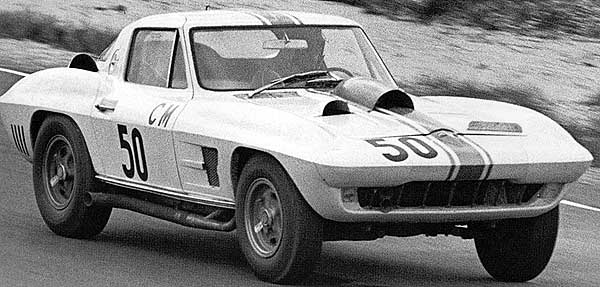
This is what the car looked like in September 1963 when it raced at Bridgehampton. All sorts of scoops and vents were experimented with. After this race, the Grand Sports were sent back to Duntov and reconfigured with the finished wheel flares, vents, scoops, etc that we’re used to seeing. Two of the cars were made into roadsters. (Dave Friedman photo from the book “Corvette Grand Sport” by Lowell C. Paddock)
Perhaps the best part of the story was that the Grand Sports weren’t immediately sent to the crusher! Instead, the cars were dolled out to privateer racers for a little “field testing.” The following March, Frederick Donner and John Gordon were seriously embarrassed during a press conference when he was asked about an especially fast, experimental Chevrolet engine that raced at Daytona (Smokey Yunick’s “427 Mystery Motor” Impala). Their response was that they knew nothing about it. Within days, the two GM top honchos made it crystal clear, “Chevrolet MUST stop all racing activities!” Some people just don’t know how to have fun!
Fortunately, the top dogs at GM were so busy selling bread and butter Chevys and other GM cars, that they didn’t notice the constant flow of back door help from Duntov and a handful of other engineers that had “gasoline in their veins,” as Bill Mitchell used to say! – Scott
PS – The ULTIMATE Grand Sport Corvette book is, “CORVETTE GRAND SPORT” by Lowell C. Paddock and Dave Friedman, with photos by Dave Friedman, first published by Motorbooks International in 1989. Unfortunately, if you go to Amazon.com, best buckle your seat belt because “new” copies are going for just over $270.00, with used copies listed for $110.00. Glad I bought mine in the early ‘90s for $29.95. But, if you love the ultimate “could have been” Corvette, it’s still worth the price. Check it out HERE.

